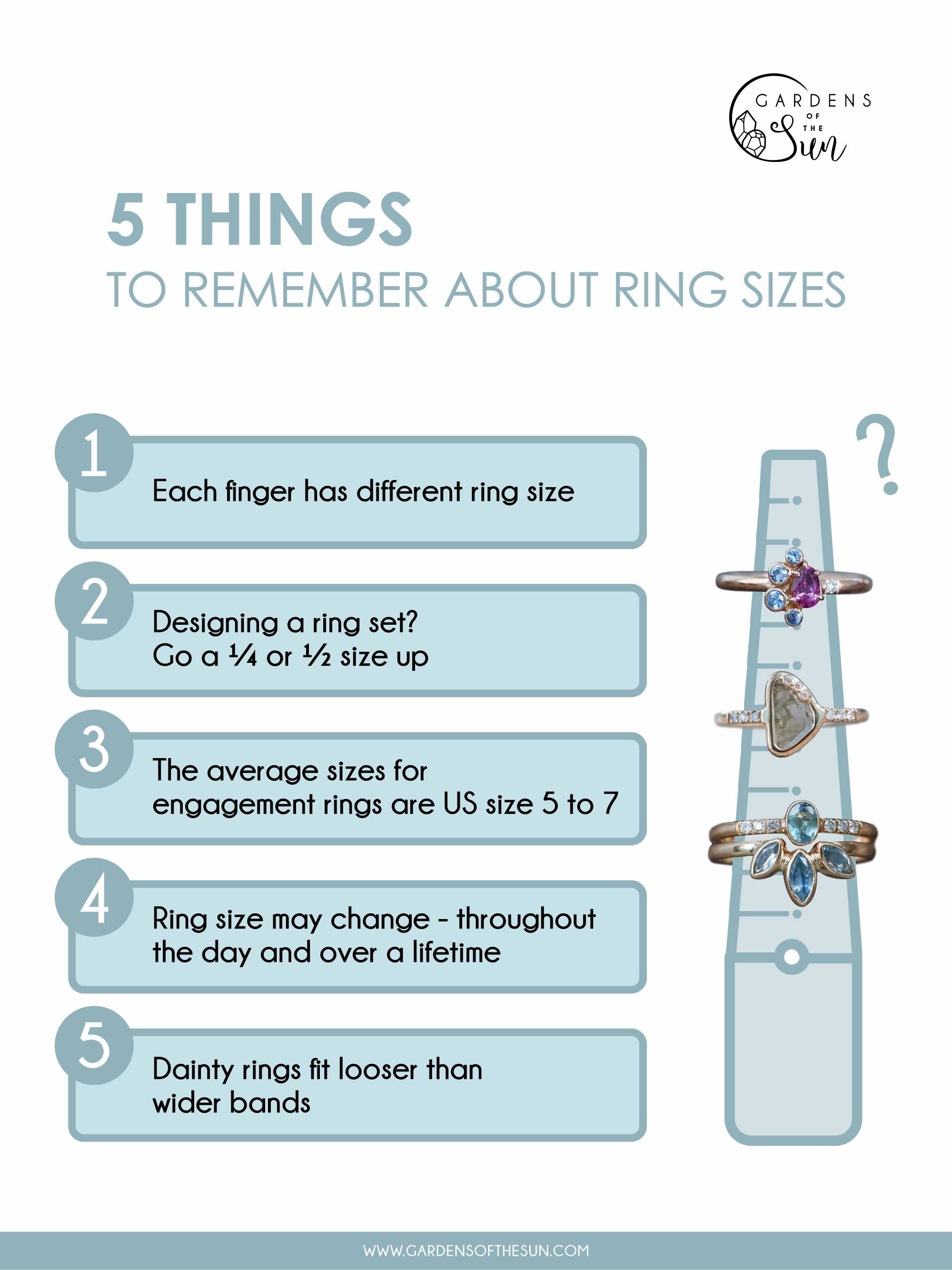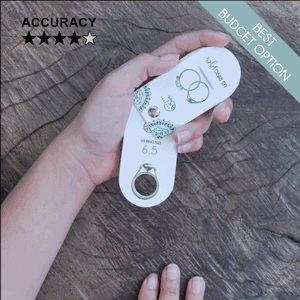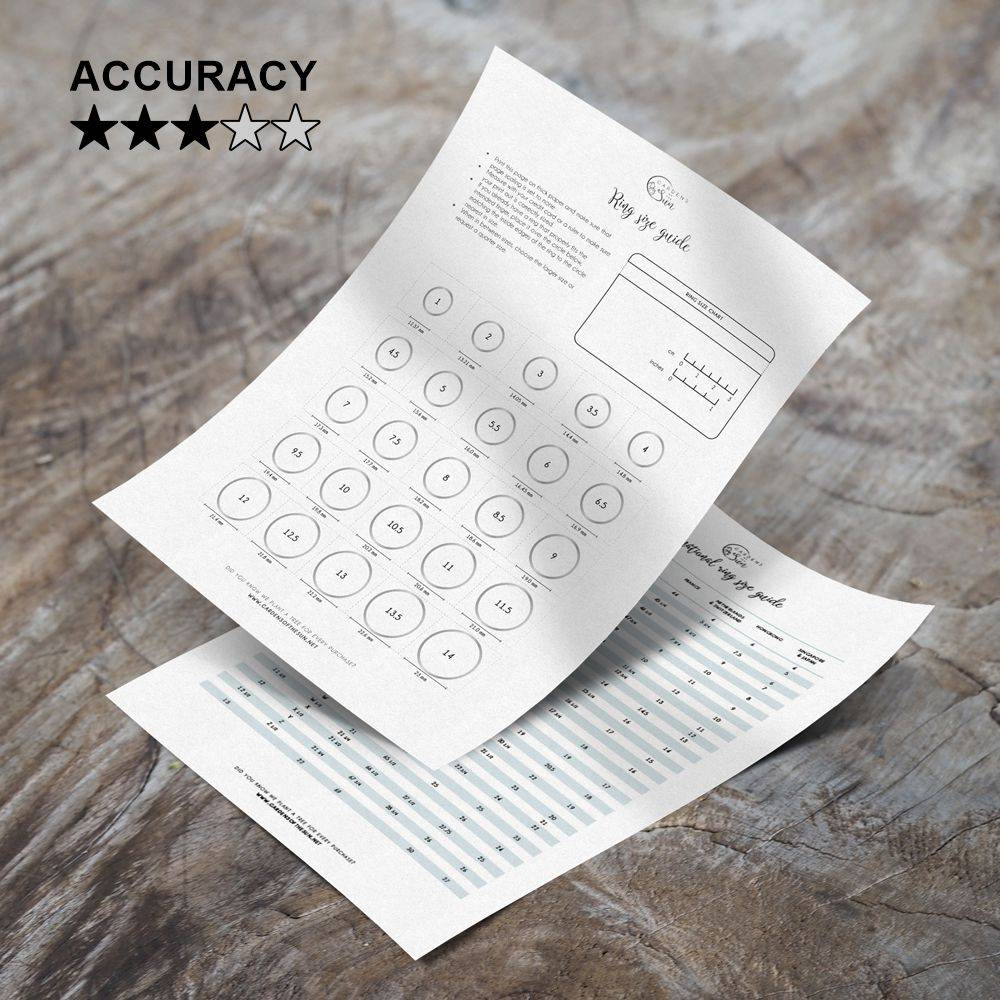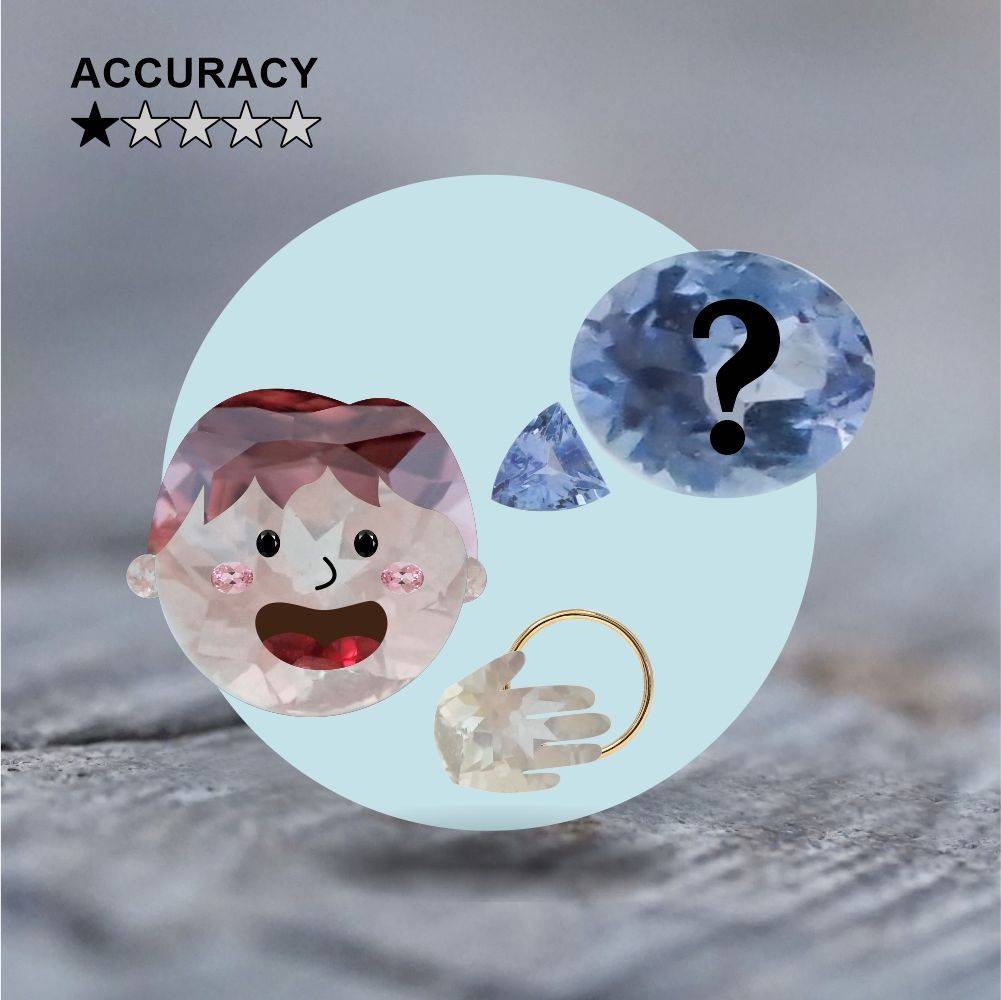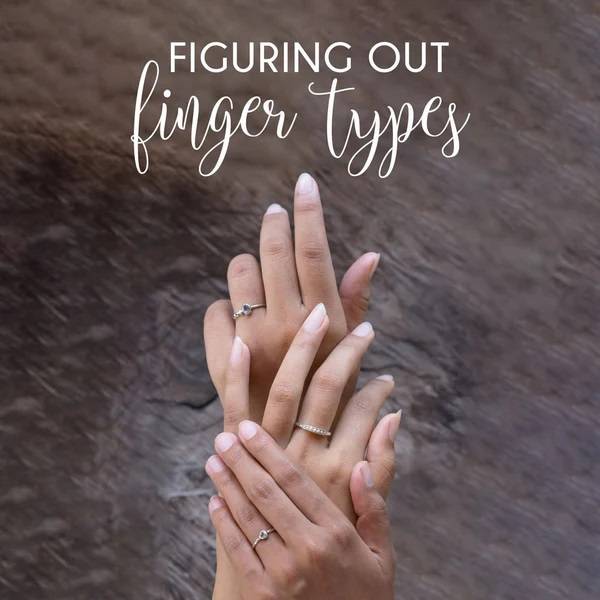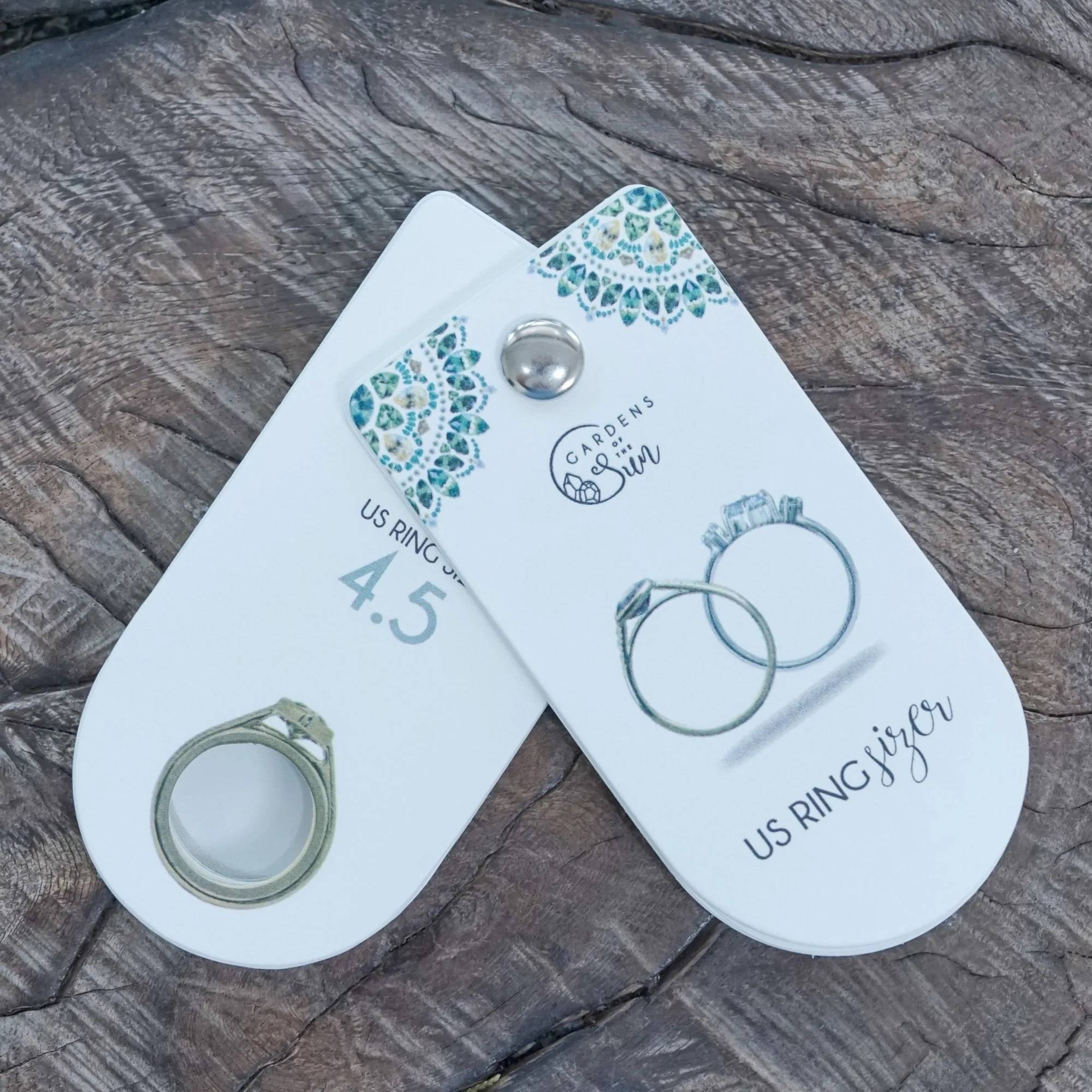Your Cart is Empty
When you’re ready to order your first jewelry online (or plan to “accidentally” leave a browser open to hint to your partner about your dream ring), you could go to a jeweler to get yourself sized.
But hey, we all love pajamas and some of us have a little more social anxiety than others, so what about the other options? Do you really need to leave that cushiony, dented spot on your sofa?
There are so many options online on how to find your ring size these days, and it’s natural to wonder if they’re really that accurate. We’ll tell you the best way to measure your ring size from home, and why. We compare different methods for how you can measure your ring size. And we’ve ranked them for you to see the easiest way to measure your ring size at home.
This ring size guide not only shares different ring sizing methods, but also a verdict of whether ring sizers are accurate and pro tips to find your ideal ring size.
We ranked 6 ways to determine ring size, based on accuracy and cost. Keep reading to find out why some ring sizing methods may not be as reliable as you might think.
1.
finger sizing gauge
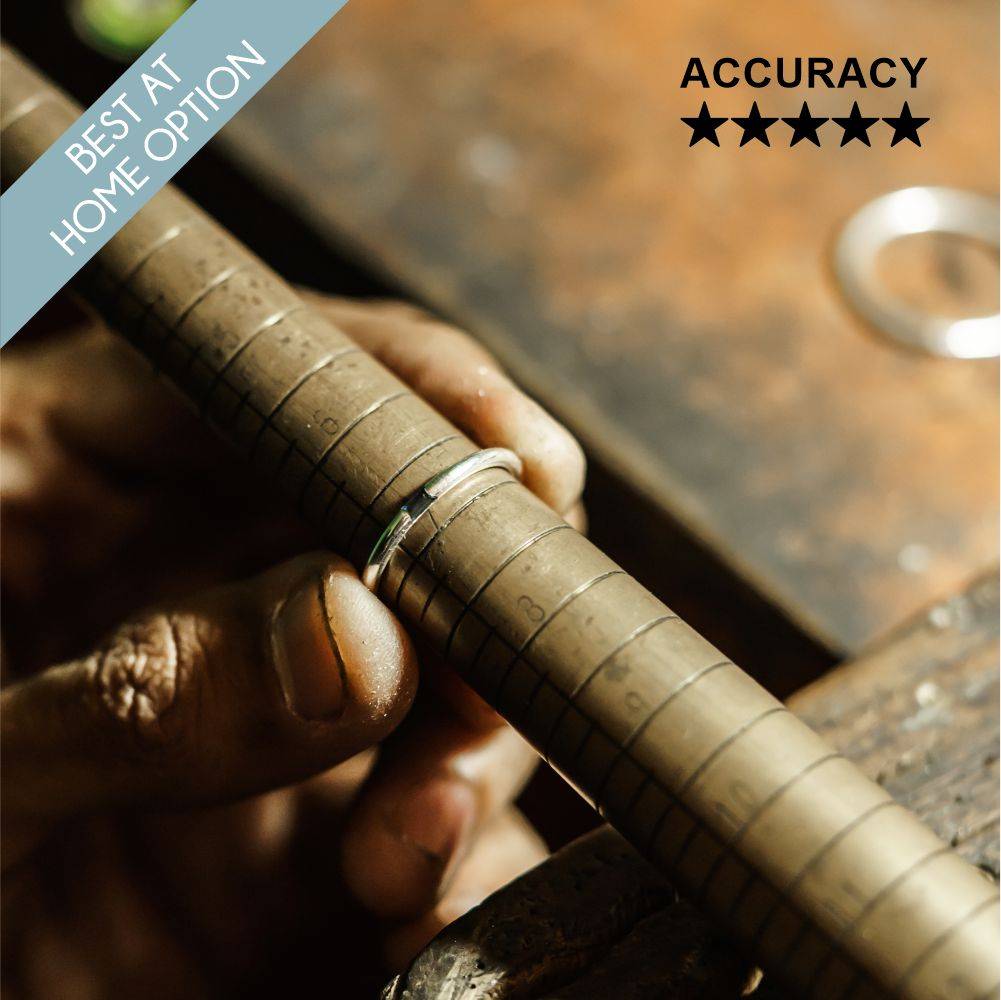
Finger sizing gauges are used to determine finger size. It's like a keychain full of rings, with rings in whole and half sizes.
Finger sizing gauges come in metal and plastic, and give you a very accurate idea of what a ring will feel like on your finger.
Accuracy:
Price:
$$$
The verdict:
Best option for ring sizing at home, if you don't mind investing.
2.
Paper ring sizer
eco friendly
Don't want to invest that much? We made a paper ring sizer! This is a pocket size set of cards with cut-out holes of sizes 3-14, so you can determine the ring size you need within seconds.
You can easily measure the different sizes of your 10 fingers and feel how a ring would slip on and off your knuckle (which, if you’ve been reading this article, is important!).
Plus, because it’s made from premium heavyweight paper it's both sturdy and can be used time and time again.
Accuracy:
Price:
$$$
The verdict:
Great way to measure your finger on your own, plus plastic free!
3.
Plastic ring sizer
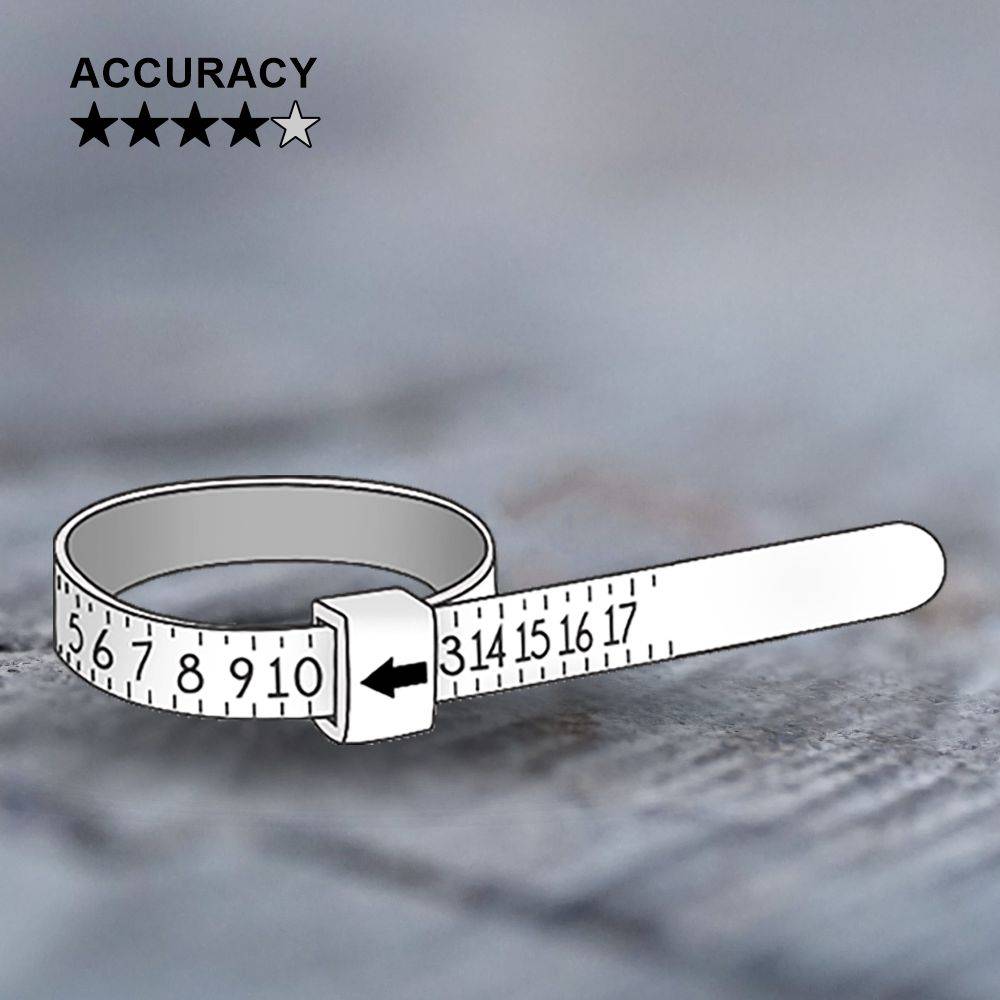
Like clothes, different countries or regions have their own way of sizing things. American, Australian, UK and Hong Kong ring sizes all use different measurement systems. You can convert your size, but with rings a single pesky millimeter makes a difference.
Gardens of the Sun uses US sizes, so when you look for a ring sizer, make sure you have the right one! Like this one for instance.
Accuracy:
Price:
$$$
The verdict:
Works pretty well, but the downside is plastic waste.
4.
Printable ring size guide
Find our free printable ring size guide here.
Print out the sizer and make sure the page scaling is set to none. And then double check with your bank card or an old school ruler to make sure your print out is the right size.
You can use the paper ring arrow (cut it out of the sheet) or take a ring that fits well and match it against the ring size circles on the sheet.
Accuracy:
Price:
$$$
The verdict:
There’s room for error as ring sizing by paper can be subject to slipping, crumpling, and misreading. But if you’re careful, it should give you a fairly good idea of your size.
5.
Piece of String
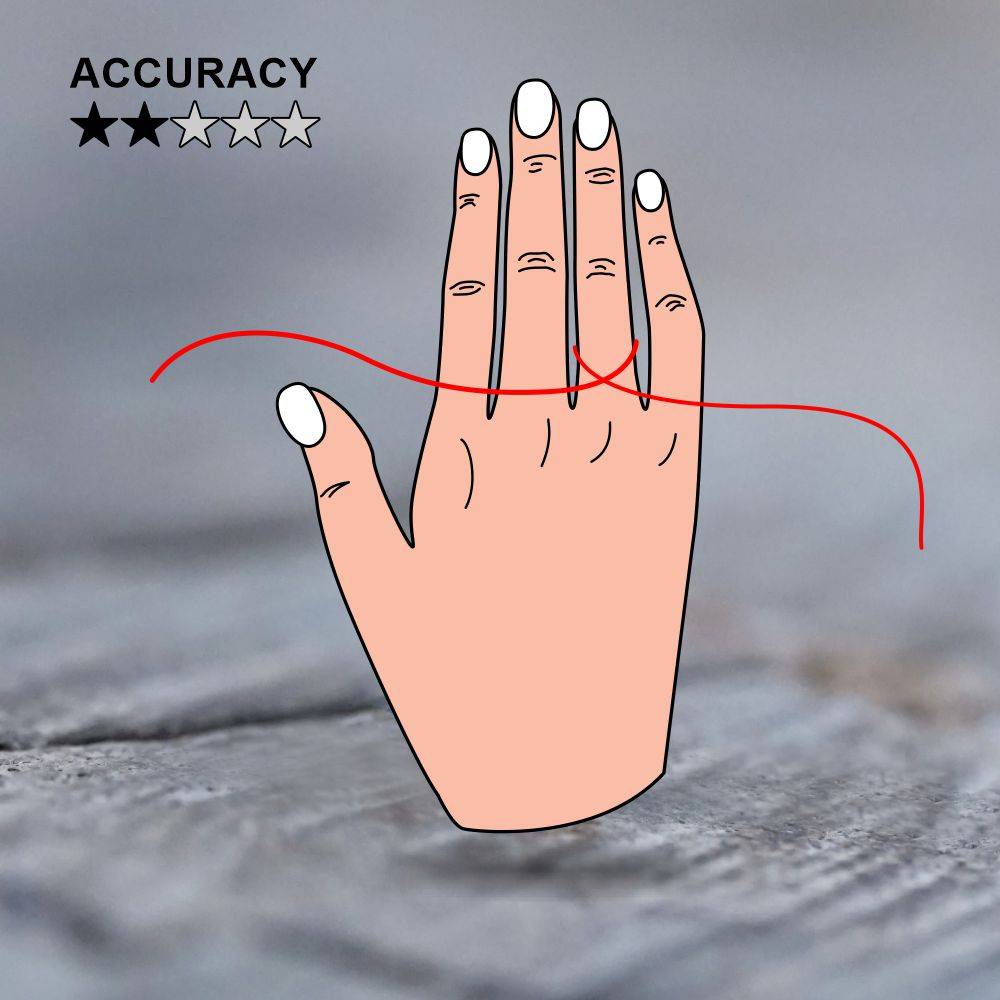
You can grab a piece of string, wrap it around your finger and then measure the string against a ruler.
Ring sizing is very detailed, and this method... not so much. A single millimeter off, and the ring will be half a size too small or too big. You'll very likely end up with a ring that doesn't fit the intended finger.
Accuracy:
Price:
$$$
The verdict:
Don't waste your time.
6.
GUESS
A popular, but very unreliable approach. While it’s tempting to take the most popular ring size and go a size up or down from there; it rarely works. Don’t do it. Finger sizes don't correlate well with a person’s height or weight.
Guessing too big could feel a bit insulting, and guessing too small can hamper a nice moment. And in both cases, you'll need to exchange or resize the ring.
Accuracy:
Price:
$$$
The verdict:
Don't guess. There are way better options to find your ring size.
Pro tips for finger measuring
Although a finger sizing gauge is exactly the same tool your local jeweler would use, your jeweler would be able to help you find out what ring size fits you most comfortably. We’re sharing some tips with you so you can find out your ring size at home (but with the eye of a professional).
How should a ring fit? Take these considerations into account for accurate sizing of your finger:
Ring doesn’t come off easily
Ring must be able to pass the finger joint
Ring stays upright and doesn’t turn freely
The correct size should be just loose enough to pass over the finger joint and settle at the position on the finger where the ring will be worn
Your ring size can change throughout the day and throughout the seasons, so try to measure at different times of the day
different countries,
different measurement systems
There's no standard way to size fingers.
US ring sizes starts at 1
UK uses the alphabet from A to Z
Hong Kong starts from 1
Take one of the smallest ring sizes: around 14 mm in diameter and convert it to different standards.
In the USA it would be a size 3, in the UK an F and in Hong Kong a 6.
When buying a ring, make sure to check with your jeweler which country's ring sizing standard they use.
What's the average ring size for a woman?
The average size for a woman's ring finger is US size 6. Most engagement rings we sell are between US size 5 and 7.
For everyday rings, you'll mostly find rings in US size 5 to 9. A jeweler like Gardens of the Sun may also offer rings in smaller or larger than average sizes.
What's the average ring size for a man?
The average size for a man's ring finger is US size 8.5. Most men's wedding bands we sell are between US size 7 and 11.
is it better to size a ring up or down?
Is it better to buy a ring too big or too small? It's better to buy a ring slightly too big, for a few reasons.
Most people gain weight over the years.
You can ask your jeweler to add little dots inside of the ring band so it fits more snug, these can be polished off again if necessary.
You can add a ring guard on the inside of your ring to make it fit more snug.
In short, it's better to buy a ring a size too big, since there are a few ways to make it fit like a smaller ring without major alterations.
does your ring size change?
Does your ring size change? Yes, most people will find their ring size changes over time and throughout the day. For example:
As you gain or lose weight
During pregnancy your fingers tend to swell due to water retention
In warmer or colder climates you fingers can swell or shrink slightly
At different times of the day
After eating very salty food (again, water retention)
After strain (like carrying a bag of groceries up the stairs)
So if you're planning to measure for an engagement ring or wedding band, it's best to measure your ring size a few times during the day for the most accurate measurement.
do you need to size up when stacking rings?
Yes, when stacking rings you'd best size up. This is because ring stacks add weight to your finger and may give muffin top if you stick to your regular ring size. Wider rings also fit differently than dainty rings for the same reason. So size a quarter size to a half size up when you're planning to stack your rings, or if it's a wide ring.
More Ring Sizing Tips

Keep these tips in mind when deciding your ring size:
Each finger has a different ring size. The ring finger on your left hand is likely a different size from the ring finger on your right hand!
Ring sizes may change, throughout your day and over a lifetime
Average engagement ring sizes are US size 5 to US size 7
Wider bands (4mm and up) fit more snug than daintier ring bands. For wider bands, size up around half a size.
Planning to stack your rings? Together they'll be wider. Size up a quarter to half a size when you stack your rings.
Rings with open bands, are slightly adjustable. Depending on the metal, you may shape or form the ring ever so slightly to adjust the fit.
Struggling to find her ring size? Consider a stand-in ring or placeholder ring for your proposal.
If you end up with a ring that doesn't fit, it's not the end of the world. You know we want you happy, and we're here to help. Email us and we'll make sure you end up with a ring to not only admire, but actually wear!
